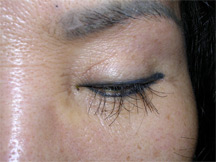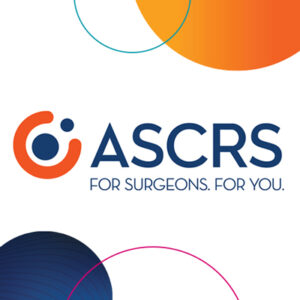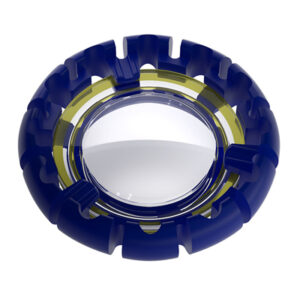Ophthalmology News
May 2007
by Michelle Dalton
EyeWorld Contributing Editor
Oculoplastic surgeons advise patients not to have the procedure for cosmetic purposes
As the consumer press touts eyelash transplant surgery as the next cosmetic procedure, oculoplastic surgeons are warning that the surgical augmentation of eyelashes can lead to severe complications, including trichiasis (eyelash misdirection), and, in extreme cases, it can threaten vision. Yet, even oculoplastic surgeons note the procedure may be warranted in cases of severe chemical burns or for reconstructive surgery. “There’s no way to perform the surgery without [leaving] a scar,” said Anna P. Murchison, M.D., assistant professor of ophthalmology, Oculoplastics, Orbital, and Cosmetic Surgery, Emory University School of Medicine, Atlanta. “I would advise against it for cosmetic purposes.”
Eyelash transplantation as a cosmetic procedure is gaining acceptance, as patients want fuller eyelashes. The procedure involves harvesting hair from the scalp and individual implantation of the hair follicles into the eyelid margin. “Implanted hair does not grow in a controlled fashion like eyelashes do,” Dr. Murchison said. “The lashes can become misdirected, causing ocular irritation, infection, and corneal scarring.”
An unusual natural occurrence
Congenital absence of eyelashes is extremely rare, Dr. Murchison said, but may be a result of alopecia adnata or generalized absence of hair, or may it be associated with syndromes such as ectodermal dysplasia or hemifacial atrophy. Acquired loss of lashes is more common and can be caused by trauma, burns, infections, surgery, medical conditions, trichotillomania, eyelid malignancies, and reactions to medications or radiation, she added.
Grafting from another eyelid, transplantation of follicular units, and strips of hair-bearing skin from the scalp or other hair-bearing areas have been performed, Dr. Murchison noted. Medical tattooing has also been used to create the illusion of eyelashes, she said.
“The first concern with eyelash transplantation is the position of the eyelashes. Where they are placed on the lid margin can lead to eyelash misdirection; the lashes can end up directed straight toward the cornea,” she said. “Patients often complain of a sensation of a foreign body on the eye. The surgery itself is not new, but changes in where the hair is harvested and where it’s being implanted has changed.”
Additionally, patients will have to continually trim the transplanted hair.
“These lashes don’t stop growing; they don’t have a nice curve to them,” Dr. Murchison said. “Even with trimming, they do not look like ‘normal’ eyelashes.”
Trichiasis case report
Dr. Murchison described the case of a 35-year-old female patient who had a history of hair transplant to both upper eyelids for cosmetic eyelash augmentation. The patient had undergone the transplant surgery in Vietnam about 10 years earlier; follicles from her scalp were used.
When the patient first presented, she complained of discomfort in both eyes from what she called “eyelash curling.” After an exam, Dr. Murchison found the woman had a line of straight cilia, 1 cm long, emanating from the anterior to her line of normal lashes, with some growing posteriorly and abrading the cornea (see Figure 1). Unfortunately, after surgical removal of the transplanted lashes was recommended, the woman was lost to follow-up.
“Patients like these, who have significant problems from the transplantation, may need to have some or all of them removed,” Dr. Murchison said. “We recommend electrolysis procedures or cryotherapy to get rid of the individual segments.”
However, there is a potential downside to cryotherapy: the loss of the original healthy eyelashes.
“It all depends on the direction and location of the implanted eyelashes in relation to the cornea,” she said. Some patients who underwent the procedure for cosmetic reasons may attempt epilation without desirable results before seeing an oculoplastic surgeon, said Dr. Murchison, who recommends surgical excision in case of full lash line cilia augmentation. “The technique of surgical removal will vary based on the technique used to place the cilia—from excising the row of cilia with the skin strip to lid-splitting techniques,” she said.
Appropriate candidates
Candidates for eyelash augmentation include people who already have significant scarring and/or patients who have lost vision in an eye due to trauma.
“There are medical alternatives as well—there are glaucoma drops that increase lash growth, so if the patient has any natural lash potential, depending on his remaining ocular health, we might recommend glaucoma drops to see if he gets some natural growth from that,” Dr. Murchison said. The results are “much better” than artificial lashes, but long-term use would not be recommended, she said.
Patients who are medical candidates for the procedure may have a healthy contralateral eyelid that can be used, which would be the preferred option, Dr. Murchison said. “In some cases, we are able to use portions of the lower eyelid to transplant onto the upper eyelid,” she said. “In patients where chemical burn is the cause, the eye is already cosmetically unappealing to many patients.”
Eyelash augmentation surgery can give those patients a sense of normalcy, she said.
A misinformed public?
The attention being given to eyelash augmentation as a cosmetic procedure is doing a disservice to the patient, Dr. Murchison said; however, oculoplastic and general ophthalmic surgeons are going to see an increase in requests for this type of surgery, she added.
“I think general ophthalmologists are going to see the same thing oculoplastic surgeons are, and we’ll need to counsel patients about the significant risks of undergoing this procedure for cosmetic purposes only,” Dr. Murchison said. “Cosmetic eyelash augmentation is exposing the patient to unnecessary risks. For the patients, they’re hearing about the topic on national news, the surgery is televised, and it’s hard for them to get good reliable information.”
Reference
Murchison AP, Wojno TH. Trichiasis after eyelash augmentation with hair follicle transplantation. Ophthal Plastic Reconstr Surg. 2007
Editors’ note
Dr. Murchison has no financial interest in any product or technique mentioned in this article.
Contact Information
Murchison: 404-778-4144; apmurch@emory.edu




